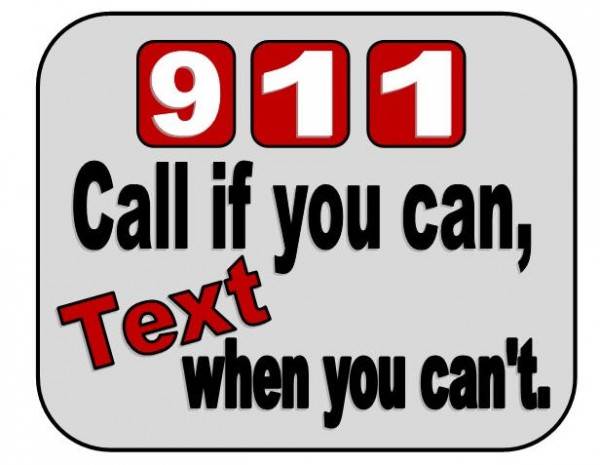![]()
Verizon, AT&T, Sprint, and T-Mobile have all implemented Text-To-911 but now it is up to individual emergency call centers to accept the messages. Calling is still the preferred method of communication in an emergency but in some situations, texting is both easier and safer, which is why public safety answering points (PSAP) are beginning to accept text messages.
At this point, the implementation of Text-To-911 only means that the four carriers have agreed to route 911 texts to PSAPs. Until the call centers purchase and install special equipment to handle text messages, they will only accept calls. In those situations, people texting 911 will receive messages informing them that their messages did not go through and that they must make a voice call.
Try To Call
Voice calling is almost always preferable to Text-To-911, according to the Federal Communications Commission (FCC), which runs the program. Even if someone is hearing impaired, the FCC said that TTY (teletypewriter) is a better and more reliable alternative to texting. This means that texting should be reserved for when someone is unable to talk, such as in a medical emergency or when there is a burglar in the caller’s house.
In addition to being the preferred method of communication with PSAPs, there are other benefits that come along with voice communication. 911 Emergency Dispatchers aren’t available just to route and answer calls; they are also trained to deal with people in stressful situations by calming them down. Unfortunately, they are not able to respond emotionally and calm someone down via a text message.
There are also some practical issues with texting that are not found in voice communication. It may take longer for texts to be sent and subsequently received than for a voice call to placed. Additionally, longer text conversations are necessary just to provide enough information to 911 operators.
A Difficult Implementation
Upgrading the infrastructure of emergency call centers is a lengthy process. Not only must the centers purchase Text-To-911 equipment, they must also train people to respond to texts rather than calls. According to an FCC document, only a handful of emergency centers in certain states support texting, while in some areas, like Massachusetts, there are no PSAPs that have enabled Text-To-911.
The FCC had previously setup guidelines that would require certain U.S. carriers to support Text-To-911 by the end of 2014 and while that deadline been met, there are no requirements for call centers to actually support the new feature. Instead, a PSAP could decide not to support texts for the next few years and in some cases, they may not even have the means to implement the new communication method.
pennywise-dollarstupid:
Posted: 2014-05-17 @ 7:56am PT
What’s cheaper for Verizon/att/tmo… Running the service or buying PSAPs equipment?
regina:
Posted: 2014-05-17 @ 7:47am PT
I say that is good
NewsFactor Network

![[Design Story] One UI Helps You Live Life Your Way – Samsung](https://loginby.com/itnews/wp-content/uploads/2025/11/1763476351_Design-Story-One-UI-Helps-You-Live-Life-Your-Way-238x178.jpg)





